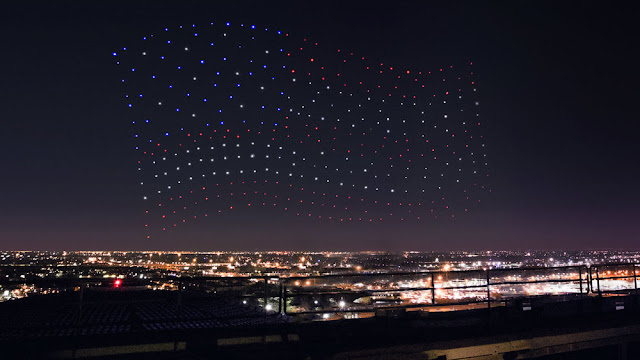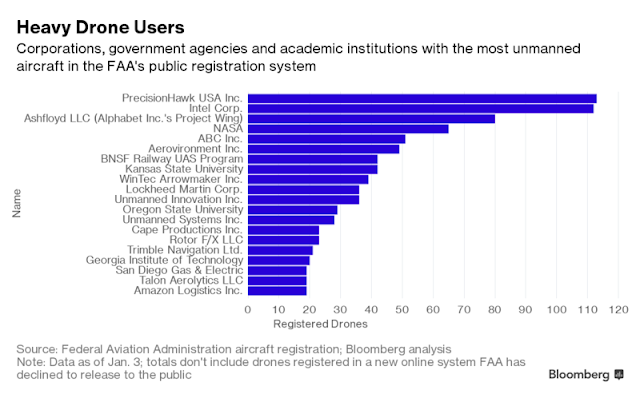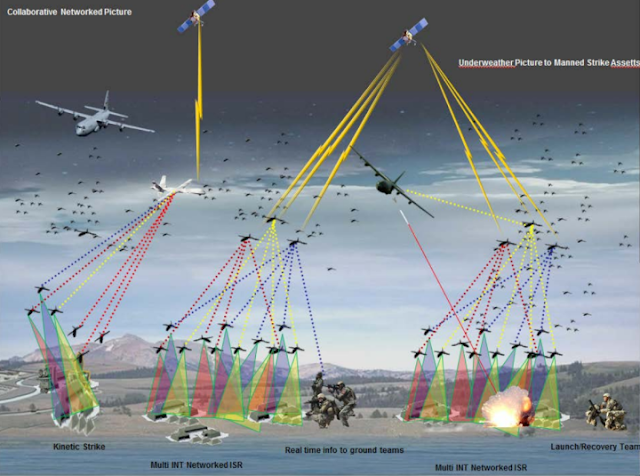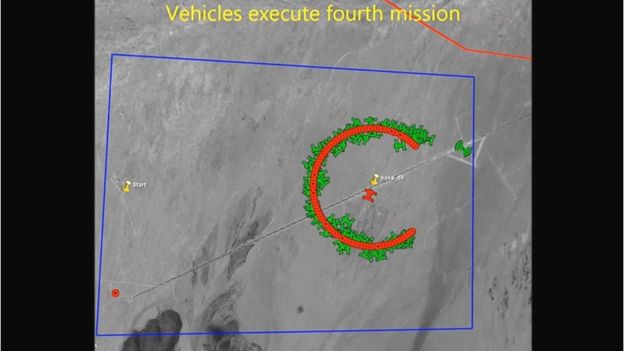Oncoming Drone Swarms
by noreply@blogger.com (brian wang) from NextBigFuture.com on (#2C82M)
Lady Gaga opened the halftime show at Super Bowl LI in front of Intel's drone swarm. Lady Gaga Halftime Drone Swarm show was pretaped to shield the crowd (no drones or planes were allowed near the stadium on the day of the game)
This artful drone swarm is not the first, though it is probably the highest-profile spectacle of its kind in the United States. Drones and dance troupes appeared on talent shows, drones have danced with humans alone in a field, an earlier Intel drone swarm set an early Guinness World Record with a dancing display. And there is my personal favorite, a small swarm of just 20 aerial robots performing before Mount Fuji, lights and flights creating a vibrant, thick sky.
At the end of their Half Time performance, Intel's drones spelled out the name of the show's other big sponsor, Pepsi.
Each one of Intel's "Shooting Star Drones" weighs under 10 ounces, can fly for up to 20 minutes, and flies at around 6 mph. Yet it's the computing that really stands out: the whole swarm of 300 flying robots are controlled by one pilot and one computer, with a second pilot on hand in case of emergencies.
Coordinating flying swarms has applications far beyond just entertainment. The Pentagon tested an autonomous drone swarm in October 2016. Those robots, coordinating with each other and flying together towards set objectives, represent the first wave of military swarming, with smaller, cheaper flocks of robots replacing or complementing the jobs previously done by bigger, more expensive craft.




The US military has launched 103 miniature swarming drones from a fighter jet during a test in California.

Read more










This artful drone swarm is not the first, though it is probably the highest-profile spectacle of its kind in the United States. Drones and dance troupes appeared on talent shows, drones have danced with humans alone in a field, an earlier Intel drone swarm set an early Guinness World Record with a dancing display. And there is my personal favorite, a small swarm of just 20 aerial robots performing before Mount Fuji, lights and flights creating a vibrant, thick sky.
At the end of their Half Time performance, Intel's drones spelled out the name of the show's other big sponsor, Pepsi.
Each one of Intel's "Shooting Star Drones" weighs under 10 ounces, can fly for up to 20 minutes, and flies at around 6 mph. Yet it's the computing that really stands out: the whole swarm of 300 flying robots are controlled by one pilot and one computer, with a second pilot on hand in case of emergencies.
Coordinating flying swarms has applications far beyond just entertainment. The Pentagon tested an autonomous drone swarm in October 2016. Those robots, coordinating with each other and flying together towards set objectives, represent the first wave of military swarming, with smaller, cheaper flocks of robots replacing or complementing the jobs previously done by bigger, more expensive craft.




The US military has launched 103 miniature swarming drones from a fighter jet during a test in California.

Read more